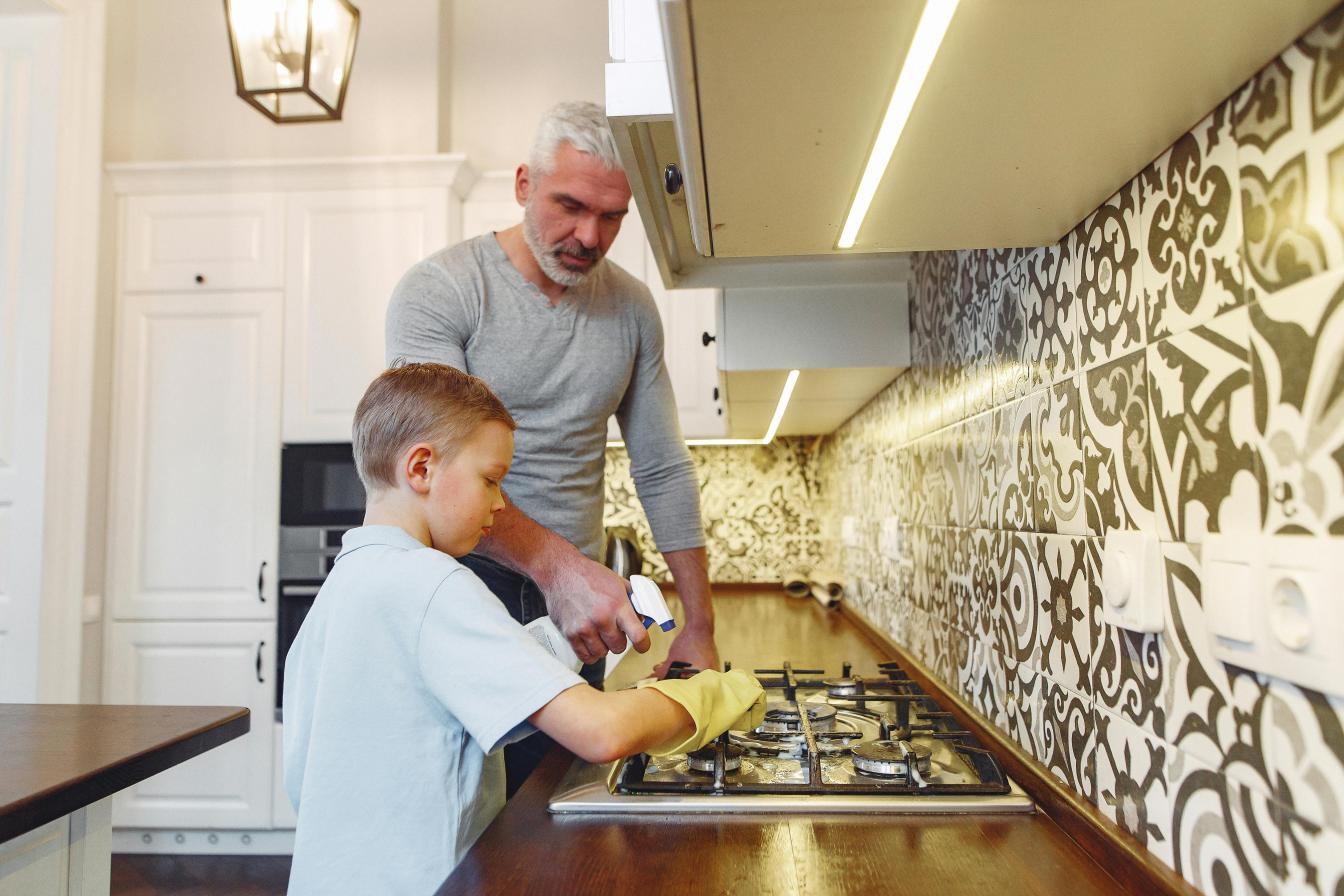
The Ultimate Guide to Changing Bad Habits: Steps, Strategies, and Psychology
Changing bad habits can be an arduous journey, akin to steering a ship away from a storm. But fret not! With the right tools and motivation, it’s entirely possible to transform those detrimental habits into positive behaviors. Whether you’re battling addictions or simply trying to change your daily routine, understanding the science and psychology behind habit formation can arm you with the knowledge you need to be successful.
3 Steps to Changing Bad Habits
When it comes to altering detrimental behaviors, it is s essential to break the process down into manageable steps. In my experience, three crucial steps can set you on the path to success: awareness, implementation, and reinforcement.
- Awareness: The first step in changing any bad habit is recognizing that it exists. This means taking a deep, honest look at your behaviors and understanding their triggers. Identifying the roots of your habits can provide you valuable insight into why you engage in them, making it easier to create a plan for change.
- Implementation: Once you become aware of your behaviors, it’s time to implement a strategy to change them. This could involve setting clear, achievable goals and devising actionable plans to reach them. It’s often helpful to replace bad habits with alternative actions that fulfill the same need.
- Reinforcement: The final step, reinforcement, involves consistently practicing new habits until they become second nature. This requires dedication and persistence, often supported by rewards and accountability measures to maintain motivation.
Changing habits is a continuous process. Making small, sustainable changes rather than attempting a complete overhaul can lead to more effective long-term results.
How to Stop a Bad Habit Permanently
Stopping a bad habit permanently might seem like an impossible task, but with determination and the right approach, it can be achieved. The key is combining self-discipline with well-researched techniques.
Start by identifying triggers. Pay close attention to the situations and emotions that lead to the undesirable behavior. Is it pressure, a lack of interest, or social pressure? Understanding these triggers can help you avoid or manage them more effectively.
Next, replace the bad habit with a good one. This is known as the “substitution” method. For example, if you bite your nails when you’re anxious, consider substituting this behavior with a less harmful action, like squeezing a stress ball.
Finally, seek support. Whether through friends, family, or professional counseling, having a support system can significantly enhance your chance of success. Sharing your journey with others provides both motivational boosts and accountability, helping you stay on track.
How to Get rid of Bad Habits and Addictions
Breaking free from addiction is perhaps one of the most difficult aspects of overcoming unhealthy habits. It’s vital to approach this with sensitivity and a robust plan.
First and foremost, acknowledge the addiction. Denial can be a huge barrier to change. Admitting that there’s a problem is the initial step toward recovery.
After that, seek professional help. Addictions often require more than just willpower to overcome. Therapy such as Cognitive Behavioral Therapy (CBT) and support groups like AA (Alcoholics Anonymous) provide structured environments conducive to recovery.
Lastly, make lifestyle changes. Surround yourself with a healthy environment that supports your new lifestyle. This might include distancing yourself from enabling friends or avoiding places where your addictions were most frequent.
Through these steps, it’s possible to regain control and create a healthier, more fulfilling life free from the ties of addiction.
Changing Bad Habits Essay
Writing an essay on changing bad habits can be both enlightening and motivational. By reflecting on personal experiences, we can analyze the intricacies of behavior and formulate strategies for improvement.
To start, choose a compelling introduction. Use a hook, such as a startling statistic or a personal anecdote, to draw readers in. This primes them for an engaging and informative read.
Develop your body paragraphs by breaking down specific points. For instance, discuss the psychology behind habit formation, real-life examples of people who’ve successfully changed, and scientifically-backed methods for altering behaviors.
Conclude with a powerful closing. Summarize the key points and reinforce the idea that changing bad habits is entirely possible with the right approach. Leave the reader feeling motivated and equipped with actionable advice.
An essay of this nature serves as both a reflection and a guide, fostering deeper understanding and readiness for personal change.
Changing Bad Habits to Good Habits
One of the most effective strategies in behavior modification is converting bad habits into beneficial ones. This transformation leverages the power of habit formation for positive outcomes.
Identify areas where bad habits overlap with unmet needs. If snacking when bored is an issue, consider substituting this habit with a more nutritious option or a hobby that keeps your hands busy, like knitting or drawing.
Create positive associations with the new habit. Reward yourself each time you engage in the new behavior. This can be as simple as a verbal affirmation or something tangible like a treat or a break.
Don’t forget the power of routine. By incorporating new habits into a daily or weekly schedule, they become more ingrained. Consistency is key; the more often you practice the new behavior, the quicker it will become second nature.
How to end a habit in 21 days
The belief that it takes 21 days to break a habit is based on popular psychology, and while the actual number of days varies, the underlying premise remains unchanged: The repetition and accuracy are essential.
Start with a short-term goal. Focus on maintaining the change for just three weeks. This period is psychologically manageable and provides a realistic timeframe to see the initial benefits of your efforts.
During these 21 days, track your progress. Keeping a journal or using an app to log daily successes and setbacks can help maintain your motivation and identify patterns that need adjusting.
After completing the 21 days, evaluate and adjust as needed. If the habit has not been entirely eradicated, don’t be discouraged. Use this as a learning experience and refine your strategy for the next cycle.
Breaking Bad Habits Psychology
Understanding the psychology behind habits can provide powerful insights into how to change them effectively. Habits form via a cycle of cues, routines, and rewards.
Start by recognizing the cue or trigger that initiates the habit. This could be an emotional state, a time of day, or a specific situation. Understanding the trigger is critical for disrupting the habit loop.
Next, examine the routine itself. What exactly do you do in response to the cue? Breaking down the routine helps in identifying points for change intervention.
Finally, identify the reward. What do you get out of the habit? Understanding the reward helps in choosing appropriate new behaviors that can fulfill the same need, making the transition smoother and more likely to succeed.
Change Your Bad Habits into Good Answer The principles
To change negative behaviors into good ones, you must first answer three essential questions: why, what, and how. The answers to these questions form the foundation for your transformation journey.
The why involves understanding the underlying reasons for your habits. It could be stress relief, boredom, or social influence. Knowing your why helps maintain focus on the end goal.
The what pertains to what you want to change. Be specific. Instead of saying, “I want to be healthier,” target a particular habit like, “I want to stop snacking late at night.”
The how involves the strategies you’ll use to make these changes. This could include setting reminders, seeking support, and using positive reinforcement. Planning your how provides a clear roadmap to follow.
What is the most effective technique to change undesirable habits?
The best way to change bad habits isn’t one-size-fits-all; it depends on various factors like the nature of the habit, your personality, and your environment. However, some universal strategies can guide the process.
First, the consciousness of oneself is important. Knowing your habits and their triggers sets the groundwork for meaningful change.
Second, commitment and consistency are essential. Successful habit change requires sustained effort and a commitment to the end goal.
Finally, support systems can be invaluable. Whether through friends, family, or professional guidance, having external support provides both accountability and encouragement.
What are the five steps for altering harmful behavior?
Changing bad behavior often involves a structured approach. Here are five effective steps that can help:
- Figure out the behavior: Determine precisely what you wish to alter.
- Understand the reasons for this: Determine the triggers and underlying reasons for the behavior. This insight will guide your intervention.
- Set Clear Goals: Establish achievable and measurable goals to guide your behavior change efforts.
- Develop a Plan: Make a nitty gritty move plan framing the steps you’ll initiate to change the way of behaving.
- Watch and tweak: Routinely audit your progress and make vital changes in accordance with remaining focused.
Each of these steps provides a clear pathway to changing bad behaviors effectively.
What are 5 Steps to Provide Up a Awful Habit?
Giving up an awful propensity can be rearranged into five noteworthy steps:
1. Admit the Issue: Recognize that the propensity is hindering and needs to change.
Identify Triggers: Get it the circumstance or feelings that trigger the habits.
2. Set Practical Objectives: Build up clear, achievable breakthroughs to offer assistance and direct your progress.
3. Find Choices: Supplant the awful propensity utilizing a more advantageous elective that answers the same fundamental need.
4. Stay Responsible: Share your objective and advance with a bolster to keep yourself accountable.
Implementing these steps increases your chances of effectively stopping hurtful propensities.
What are the 7 Steps to Breaking Habits?
Breaking a habit can be more complex and may require a detailed approach. Here are seven steps to guide you:
- Awareness: recognize the habit and understand its impact on your life.
- Motivation: Identify why you want to change and keep this reason at the forefront.
- Identification of Triggers: Pinpoint the specific triggers that lead to the bad habit.
- Setting Clear Goals: Establish specific, measurable, and achievable goals to guide your efforts.
- Develop a Strategy: Creating a detailed plan for how you will avoid triggers and replace the bad habit with a healthier one.
- Seek Support: Engage with friends, family, or professionals who can offer guidance and encouragement.
- Monitor Progress and Adapt: Continuously track your progress and adjust your strategy as needed to stay on course.
Adhering to these steps can significantly enhance your ability to break free from persistent bad habits.
Frequently Asked Questions (FAQ)
Q1: How long does it take to change a habit? A: While the 21-day rule is popular, research showed it can take anywhere from 18 to 254 days to change a habits, depending on the complexity and individual differences.
Q2: Is it possible to change multiple habits at once? A: It’s generally more effective to focus on changing one habit at a time. This allows you to dedicate your resources and effort to making a successful change before moving on to the next.
Q3: Can meditation help in changing bad habits? A: Yes, meditation can increase self-awareness and mindfulness, which are crucial for identifying triggers and managing impulses that lead to bad habits.
Q4: What role does willpower play in changing habits? A: Willpower is essential but not sufficient on its own. Combining willpower with structured plans, support systems, and positive reinforcement is more effective.
Q5: Are some habits easier to change than others? A: Absolutely. Habits that have been ingrained for years or those tied to emotional or psychological factors can be more challenging to change than simpler, more recent habits.
Conclusion
Changing bad habits is a multifaceted journey involving self-awareness, structured planning, and consistent effort. Equipped with the right strategies, psychological insights, and support systems, it’s entirely possible to transform detrimental behaviors into positive, life-enhancing habits. Remember, that the journey may be challenging, but the rewards of a healthier, more fulfilling life are well worth the effort.
Citations to this article:
- Inverse, How to break bad habits in 3 steps, according to science, Inverse, February 20, 2024, August 30, 2024
- wikiHow, How to Change Bad Habits: 10 Steps (with Pictures), wikiHow, August 30, 2024
- Wired, How to (Finally) Break That Bad Habit, Wired, January 01, 2023, August 30, 2024
- Time, How to Break Bad Habits, According to Science, Time, August 28, 2018, August 30, 2024
- Harvard Business Review, How to Break Up with Your Bad Habits, Harvard Business Review, December 16, 2019, August 30, 2024
Post Disclaimer
The information contained in this post is for general information purposes only. The information is provided by The Ultimate Guide to Changing Bad Habits: Steps, Strategies, and Psychology and while we endeavour to keep the information up to date and correct, we make no representations or warranties of any kind, express or implied, about the completeness, accuracy, reliability, suitability or availability with respect to the website or the information, products, services, or related graphics contained on the post for any purpose.




